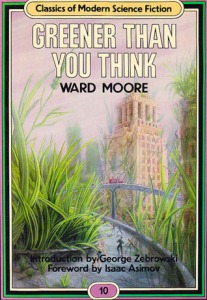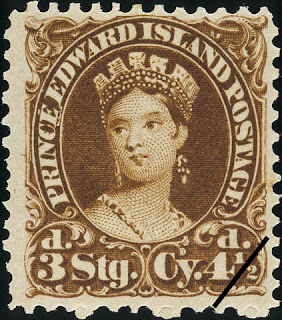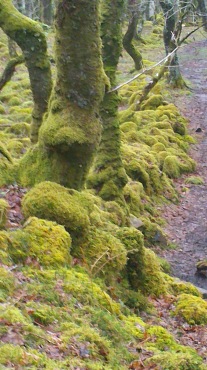Caminante, son tus huellas
el camino, y nada más;
caminante, no hay camino,
se hace camino al andar.
Al andar se hace camino,
y al volver la vista atrás
se ve la senda que nunca
se ha de volver a pisar.
Caminante, no hay camino,
sino estelas en la mar.
Walker, your tracks are
The path, and nothing else;
walker, there is no path,
the path is made by walking.
By walking the path is made
and when you turn your gaze back
you see the trail you can never tread again.
Walker, there is no path,
just the foam in your wake on the sea.
This is from Proverbios y Cantares XXIX, in Antonio Machado´s collection Campos de Castilla. There is no path, you make the path by walking. Terry Elliott explores the idea of the learner as walker in his post about the feldgang. He also wrote an excellent post about slow viewing.
I have been thinking about the idea of the “fork back“, which is a term that arose especially in the FedWikiHappening. In Smallest Federated Wiki when one wishes to edit one makes a copy of the page, which is called a “fork” (the term comes from software development), and this page may diverge from the original, down its own path. It is rich and fascinating. But is quite hard to “fork back”. We wander off down our rabbit holes, explore and enrich our thinking, and quest on ever outwards. That’s fine, and for people of a certain demeanour, it is sufficient, we go on learning, and no one but us has to know or reflect on it (bear with me on that). This happens in most cMOOCs. It is part of what is valuable about them.
Back in education, though, there are requirements, especially the need to present and represent our learning so that others can be convinced that we have learned, and that we do now fit into whatever discourse community we need to enter. Bringing the unpredictable, unstructured chaotic flow of informal learning (for shorthand the “rhizome”, if you want) within the fold, within the pale of education is a challenge. How do we do that, how do we fork back from our outward paths back into that fold, how de we reduce the rich multiplicity, that we ourselves can often not encapsulate, in order to present it for evaluation and accreditation without collapsing and reducing and belittling it? Should we even try?
One of the things that I wonder about in cMOOCs is the kaleidoscopic nature of the conversations, how they fragment and coalesce, emerging to the surface in a tweet, and later in a reference in a blog post, and then reappearing somewhere completely different (on a sign in a country lane, for example). However, perhaps due to the volume (noise and number), so much seems to be a rush forward, a tumbling ride through the ideas. I am increasingly attracted to the idea of a slower space, and I wonder whether the way to really enrich and consolidate what goes on in a course like #rhizo15 is to build in conversations about the paths we have trod. A kind of retreading, the path will have changed, it is more like a spreading wake, but it gives a chance for a dialogue around how we learned, what we learned, with whom we learned, the tools we used, it allows for a slow, slight return. The idea would be to pick just one notion, one thing we took away from the conversation and engage in a structured dialogue with a peer about it, where the peer is a critical friend, a fellow explorer. What might emerge from that?
First, the reflection is a further step along the journey, even as it looks backward, the path has changed and is a new path, and the echoes and shifts in the pattern are likely to enrich our understandings.
The co-reflection can also be highly valuable, it is useful to share the process, and the retreading together may become a reworking, a re-exposure, leading to new patterns and/or consolidation of others. So this might be another (formative?) tool within the informal learning process.
But this could also evolve into a peripatetic approach to assessment. If a teacher walks with a learner, in this way, they should soon be able to discern what has occurred, and understand the depth and breadth of the learner’s journey….
Is there mileage in this? I would love to try this out. Please contact me if it interests you.



